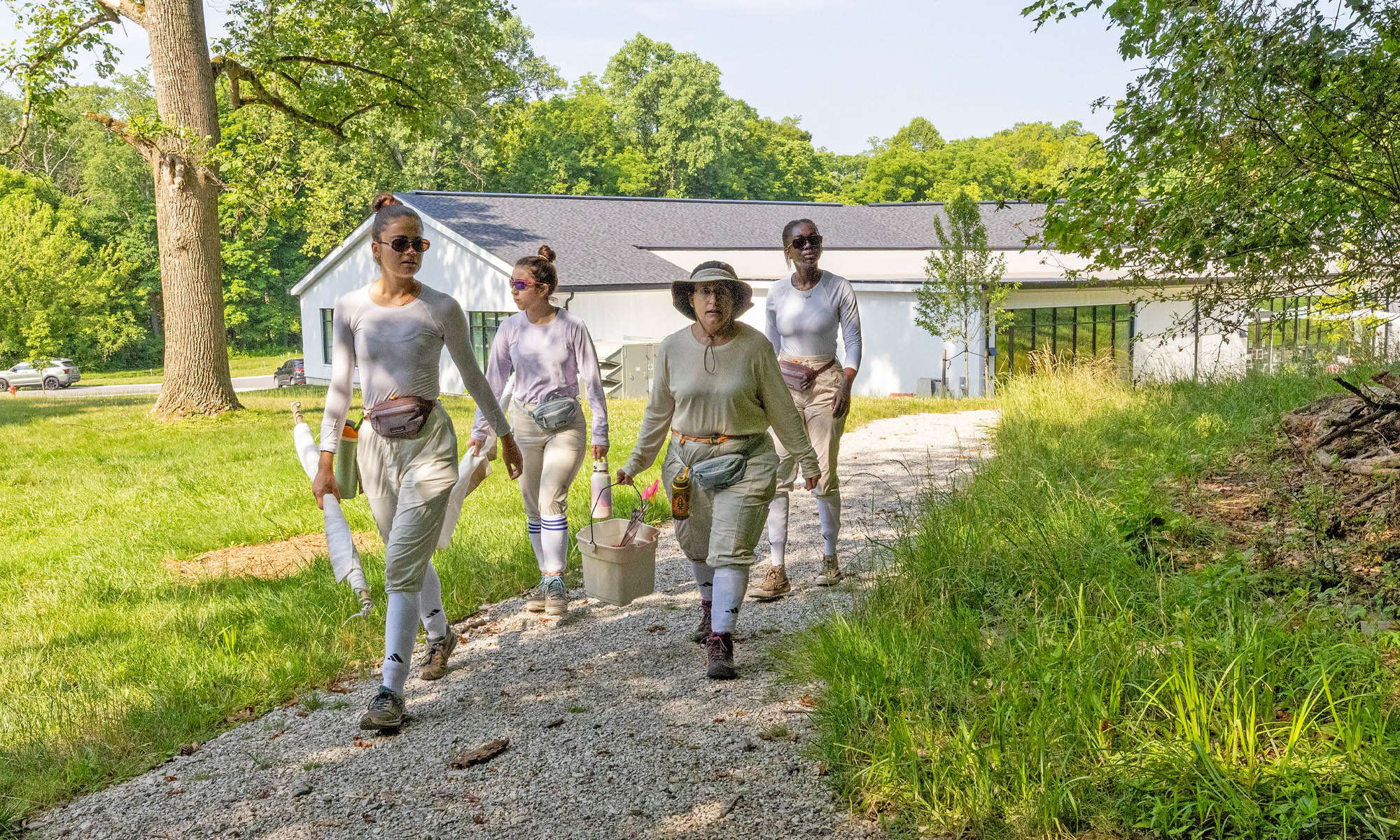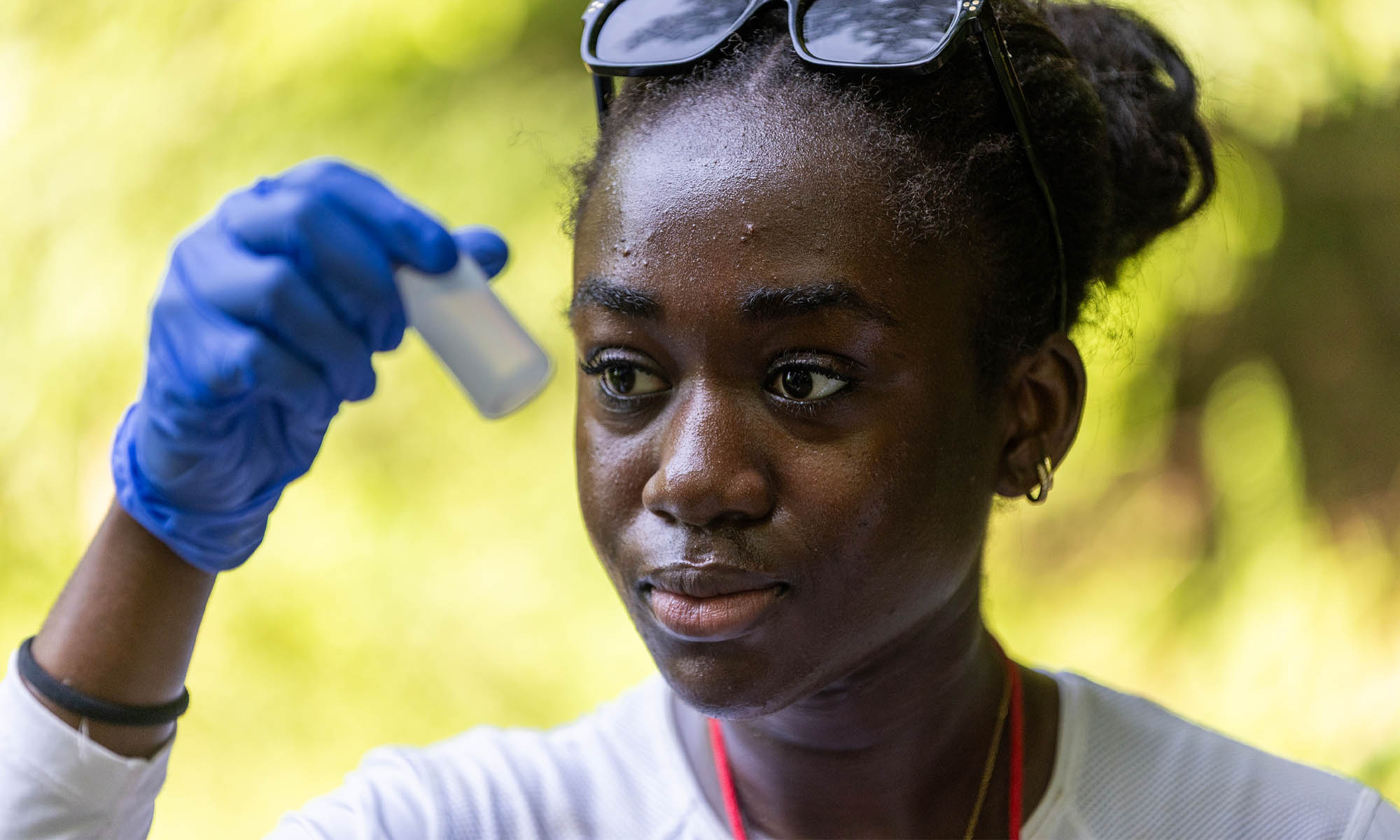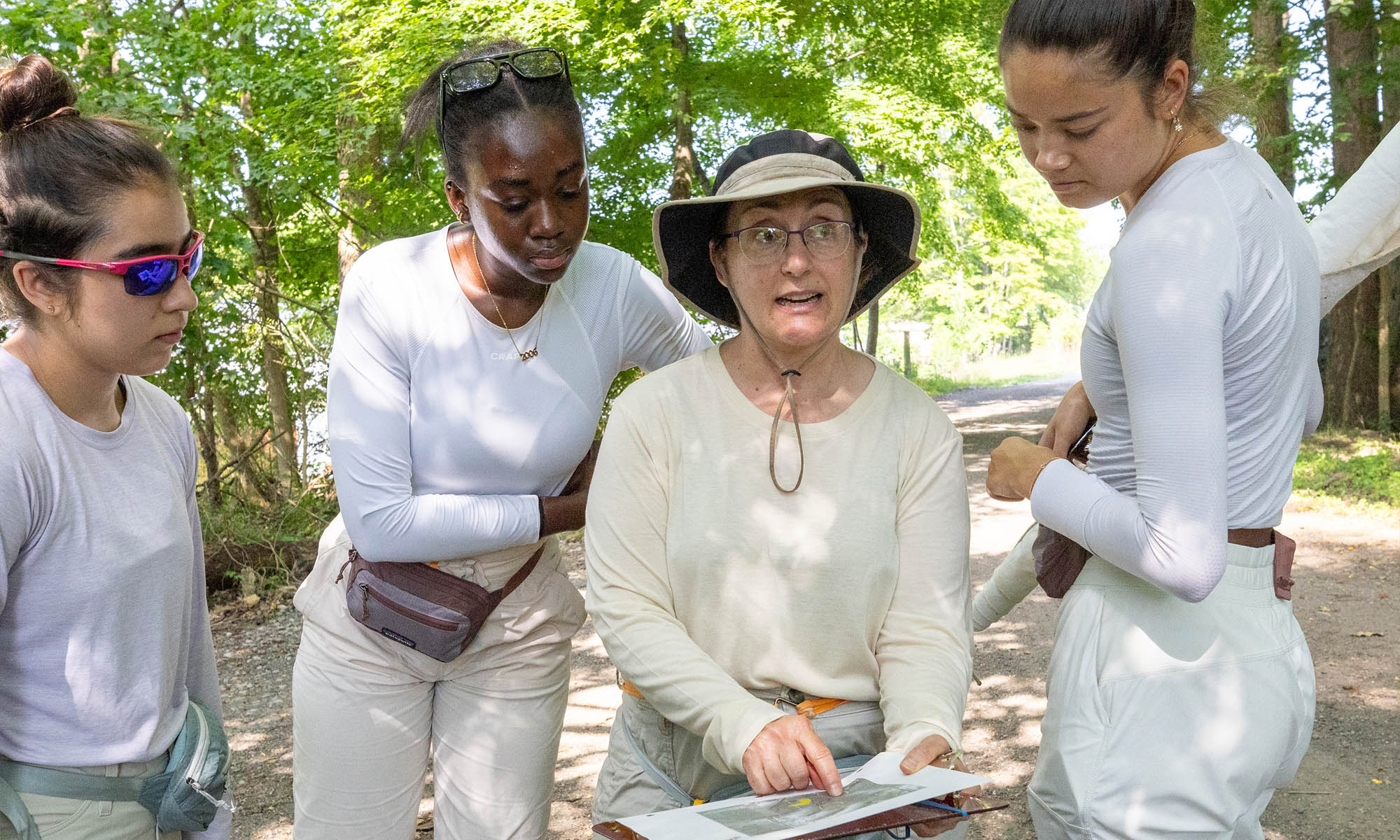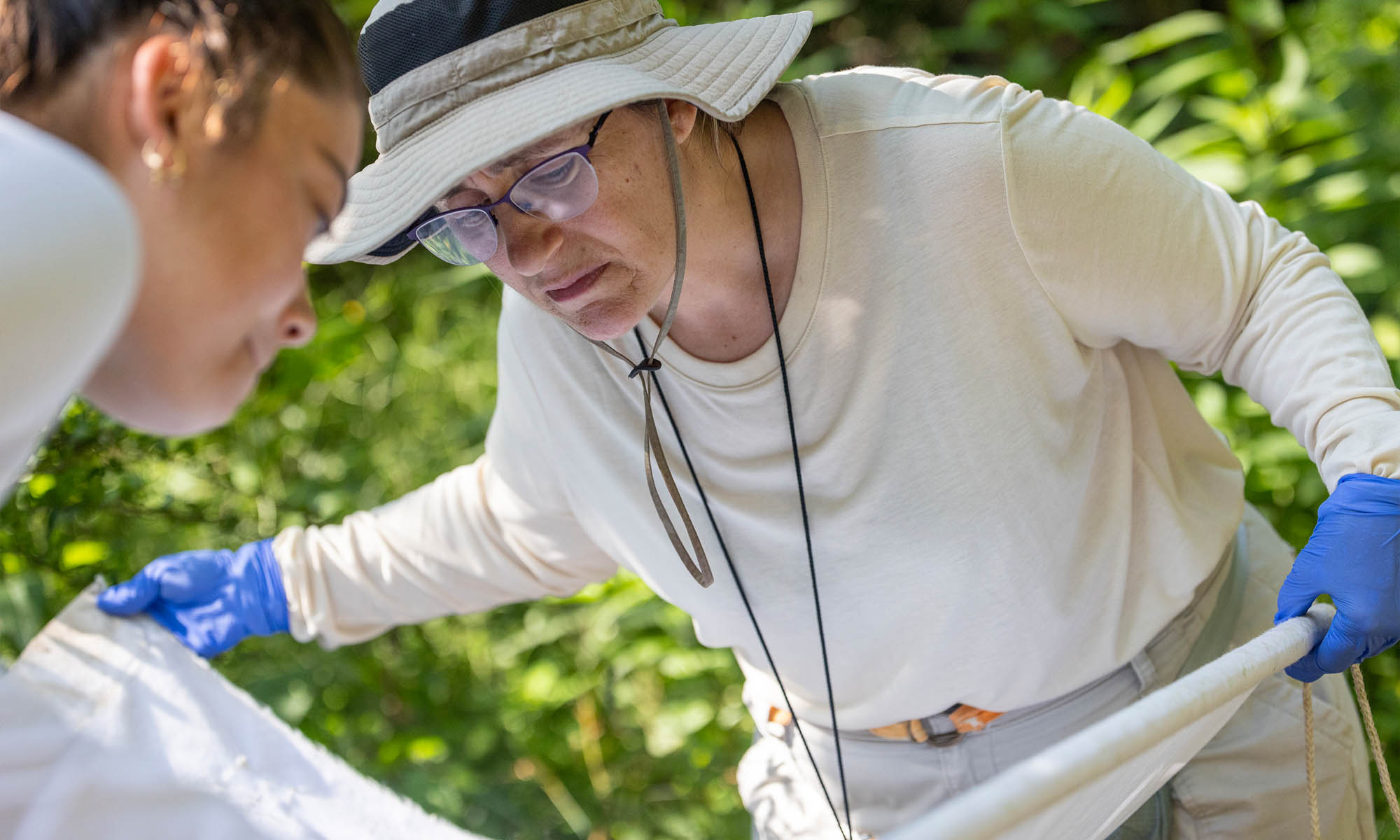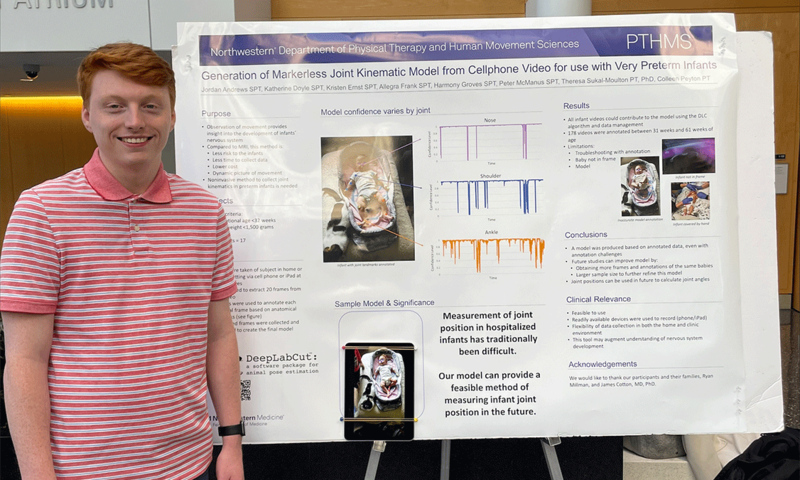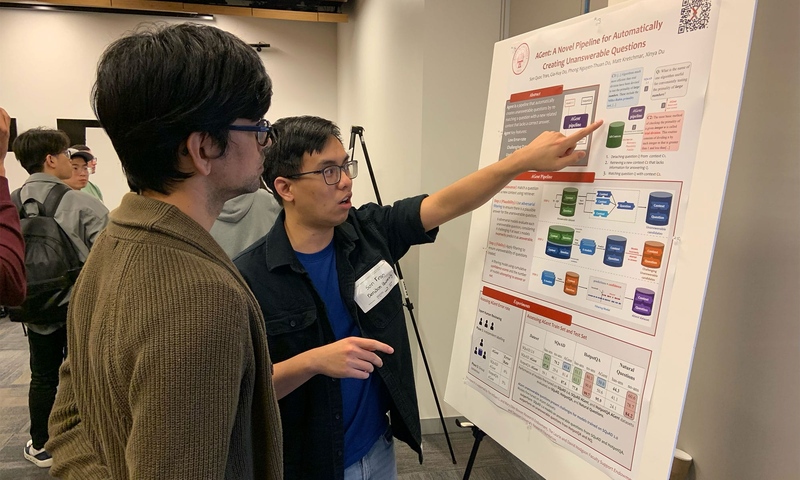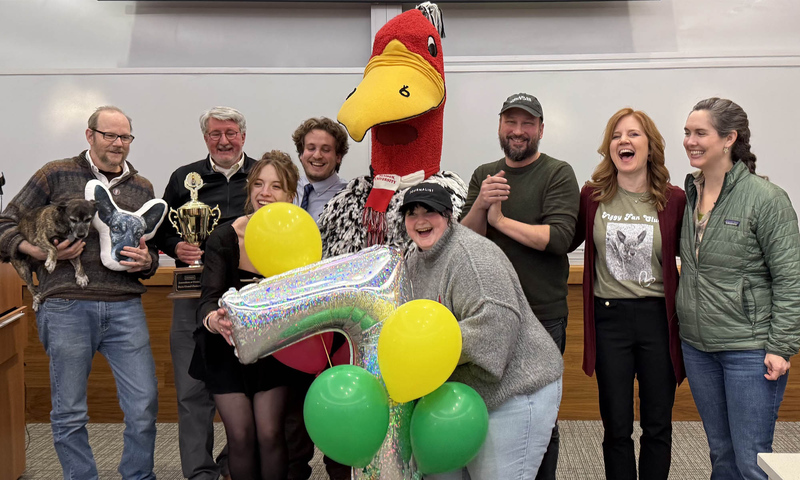Just a few steps into this day’s research, Denison students Fafa Nartey ’28 and Fernanda Anzures ’26 find their first tick.
It is a black-legged deer tick nymph, which biology and global health Professor Jessica Rettig likens to a tick teenager. And it is tiny, about the size of the dot over the “i” in tick.
Diminutive though they may be, these are the ticks that carry and transmit the bacteria that causes Lyme disease, a significant and growing health concern that has been creeping west across Ohio for years.
In a new partnership with the Licking County Health Department, Rettig and a team of students in the Summer Scholars program are collecting ticks from Denison’s Biological Reserve and various county parks. The fledgling partnership with the health department has also led to Denison students’ involvement in tuberculosis research and hopefully will open other health-related research opportunities down the road, Rettig says.
On the tick research front, Rettig’s group is recording reams of relevant data with the aim of revealing more about tick habits, environmental preferences, and population statistics. Each tick is preserved in vials of alcohol, and the ticks from the parks are sent to the state health department for further testing.
The data, in this case, demands a steady supply of creepy-crawlies.
On a weekday in June, Nartey, Anzures, and Anna Leach ’26 roam the Bio Reserve with Rettig. The three students are here for 10 weeks; two others, Sara Amjad ’28 and Hollee Sheneman ’28, worked with them for the first five weeks.
The students wear light clothing treated with permethrin, an insecticide lethal to ticks. They tuck their pant cuffs into their socks, wear their hair up, and apply bug spray with DEET before setting out each day. At the end of each day’s field work, they scour each other for any unwanted hitchhikers.
Ticks do not fly or even jump, despite what many people think, Rettig says.
Instead, they cling to trailside grass, brush, and leaf litter, typically only a foot or two from the ground.
They hold out their legs to grab onto any passing mammal in a practice known as “questing.” Latching onto a suitable source, whether mouse, rabbit, deer, or human, they feast on the host’s blood, ideally for several days, before dropping off again.
Day after day, the research students pull sheet-like “tick drags” through trailside brush in 10-meter increments, stopping to check for and remove any ticks. Any farther and the ticks that have clung to the drag will figure out they are not on a living host and drop off.
The researchers catalog the ticks found and periodically record a variety of environmental data, including humidity, air and soil temperatures, and light levels.
The group has found mostly deer ticks and the much larger American dog tick but encountered a single specimen of a third species, the rabbit tick. If Nartey has to pick a favorite, it’s the dog tick.
“They’re bigger and easier to spot,” the biology and global health major says.
In this mostly wooded part of the Bio Reserve, they find exclusively deer ticks. Most are nymphs, and the students say it took a bit of practice before they taught themselves to zero in on what appear to be poppyseeds crawling across the drag.
Today Nartey and Anzures find tick after tick on their drag. Just steps away on the other side of the same trail, though, Rettig and Leach are striking out.
“That’s not a tick, it’s a spider,” Rettig says, peering disappointedly at their drag. “Darn.”
“I’m manifesting ticks for y’all,” Anzures says.
Her positive thinking may work. Soon after she says this, the dry spell for Leach and Rettig is over.
“We got one!” Leach says.
“Yay!” Nartey and Anzures say in unison.
“There’s another one! Two ticks!” Leach says.
“Woohoo!”
Back in the lab they have tailored individual research topics based on varied facets of the gathered data, from the environmental impacts on tick behaviors to population diversity across different habitats.
They admit to minor bouts of the heebie-jeebies during this, their Summer of Ticks.
“I have dreams about ticks now,” says Leach, a biology major.
“I don’t sit in the grass anymore,” says Anzures, a double-major in dance and biology.
Those minor psychological traumas aside, the students say the Summer Scholars program is providing them with key insights about the challenges and rewards of scientific research. It has convinced Anzures, for one, that her future must include some field work.
“I’m really enjoying it,” she says. “It’s changed my whole perspective.”



